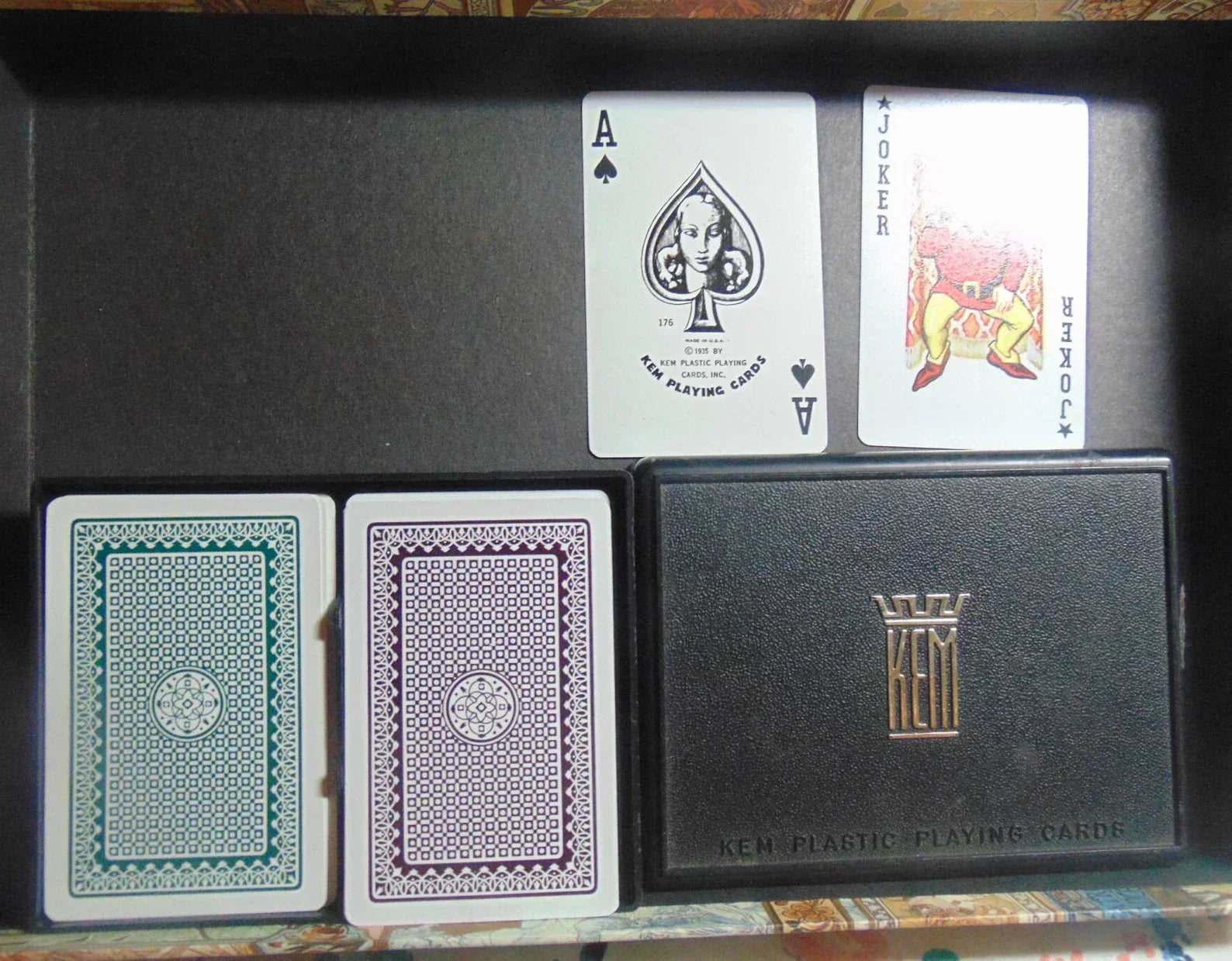The Emergence of 100% Plastic Playing Cards: A Revolution in Card Technology
The playing card industry experienced a transformative shift in the mid-20th century with the introduction of 100% plastic playing cards—a technological breakthrough that revolutionized gaming experiences from casual home games to professional casino environments. This innovation represented not just a material change, but a fundamental reimagining of what playing cards could be.
The Pioneer: KEM Plastic Playing Cards (1935)
The story of 100% plastic playing cards begins with Austrian inventor Siegfried Klausner, who filed US Patent #1,811,322 for a washable playing card in 1929. In 1933, Klausner partnered with Ely Culbertson, the influential bridge promoter and founder of The Bridge World magazine, to establish KEM Playing Cards, Inc.
After years of development working with Western Playing Card Company on printing processes and collaborating with plastics companies like DuPont to refine materials and inks, KEM finally debuted their revolutionary cards in 1935. These first plastic cards were made from cellulose acetate, a material derived from cotton and wood pulp. The initial designs included Gold Band, Mosaic, Club, and Cameo, selling for $2.50 per pack—approximately five times the cost of Bicycle poker cards and equivalent to $42.50 in today’s dollars.
The Material Science Behind Plastic Cards
Cellulose Acetate vs. Modern PVC
- Washability: Cards could be cleaned with water without damage
- Durability: Resistant to humidity, desert sand, and spills
- Shape retention: Cards maintained their original form after bending
- Longevity: Significantly outlasted paper alternatives
Manufacturing Process Evolution
- Material preparation: Mixing plastic compounds with stabilizers and colorants
- Sheet formation: Casting or extruding uniform plastic sheets
- Printing: Using specialized inks compatible with plastic substrates
- Cutting and finishing: Precision die-cutting to exact dimensions
- Quality control: Rigorous testing for durability and consistency
World War II: The Catalyst for Adoption
- Jungle humidity without warping or deteriorating
- Desert sand and grit that would destroy paper cards
- Frequent handling by soldiers seeking entertainment
- Limited replacement opportunities in combat zones
Casino Industry Transformation
Professional Gaming Adoption
World Series of Poker Evolution
- 2005-2006: Switched from KEM to Copag plastic cards when moving to the Rio
- 2007-2014: Used KEM-made Bicycle branded cards, demonstrating plastic cards’ professional acceptance
- 2015: Briefly used Modiano cards (unpopular with players)
- 2016-present: Returned to Copag plastic cards, cementing their professional status
Modern Plastic Card Innovations
Leading Manufacturers
Technological Advances
Modern plastic cards incorporate sophisticated features:
RFID integration: Some high-end venues use RFID-embedded plastic cards for game tracking and security
Enhanced materials: Advanced PVC formulations provide optimal flexibility and durability
Precision manufacturing: Computer-controlled production ensures consistent quality
Security features: Embedded elements that prevent counterfeiting
The Plastic vs. Paper Debate
Advantages of 100% Plastic Cards
Durability: Plastic cards resist bending, tearing, and water damage
Hygiene: Can be thoroughly cleaned and sanitized
Consistency: Maintain uniform handling characteristics throughout their lifespan Security: Difficult to mark or damage for cheating purposes
Economics: Higher initial cost offset by dramatically longer lifespan
Paper Card Advantages
Market Impact and Future Trends
- RFID integration for tournament and casino applications
- Eco-friendly materials addressing sustainability concerns
- Custom printing for corporate and promotional uses
- Enhanced security features for high-stakes gaming
Conclusion: A Lasting Revolution

